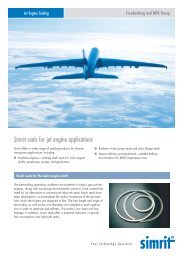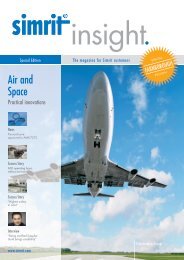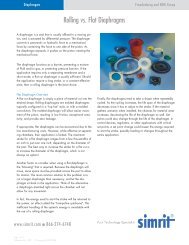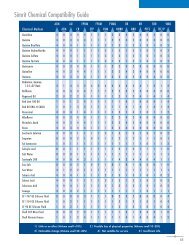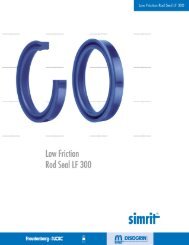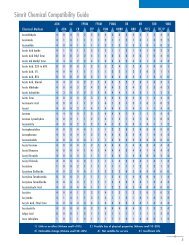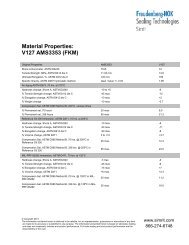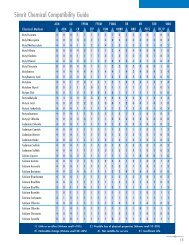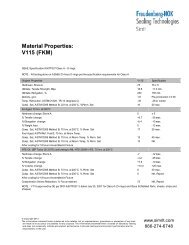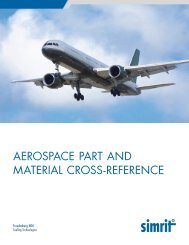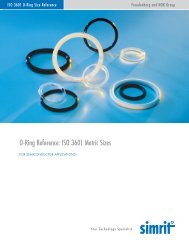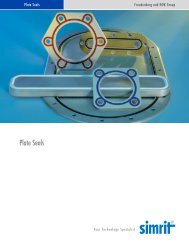Diaphragm Design Manual - Simrit
Diaphragm Design Manual - Simrit
Diaphragm Design Manual - Simrit
Create successful ePaper yourself
Turn your PDF publications into a flip-book with our unique Google optimized e-Paper software.
Please also review the <strong>Diaphragm</strong> Convolution (Sidewall) Action section of this manual foradditional insight into this phenomenon.Piston <strong>Design</strong> CriteriaSizeIn sizing the piston for your application the initial assumption should always be that the requiredeffective system diameter is the piston outside diameter. This approach will help compensate forthe energy loss due to internal friction within the system itself. It also eliminates some of themessy issues associated with a fluctuating effective area (see the section on Effective Area).Length (Piston “Skirt”)When considering the length of the piston, often referred to as the piston skirt, the designermust keep in mind the movement of the convolution during the stroke cycle. While almost anyskirt length may work in principle, best design practices call for the skirt to be long enough tosupport the convolution during all phases of the stroke cycle (reference Figure 15). At no timeshould the convolution be able to expand or move beyond to top edge of the skirt.Extending the length of the skirt can also offer the designer one option for a positive stop, whichwill help protect the diaphragm from over stroke (reference Figure 16).Formula 10 – The Piston Skirt Length for Best <strong>Diaphragm</strong> SupportShapePiston Skirt Length Convolution Height Half 2StrokeMost applications will call for a round piston with a piston skirt, designed to support thediaphragm’s sidewall throughout its stroke length (reference Figure 15). To ensure a proper fit,the radius on the base of the piston must match the piston radius of the diaphragm.Figure 15 – Proper Piston to Convolution Support vs. Poor SupportPlease refer to the part figures in the <strong>Diaphragm</strong> Styles section of this design guide for thelocation of the diaphragm’s piston radius.In cases where a special piston shape may be required, please consult with our team ofdiaphragm design engineers for the optimum shape and attachment method.© Copyright FNGP 200934



